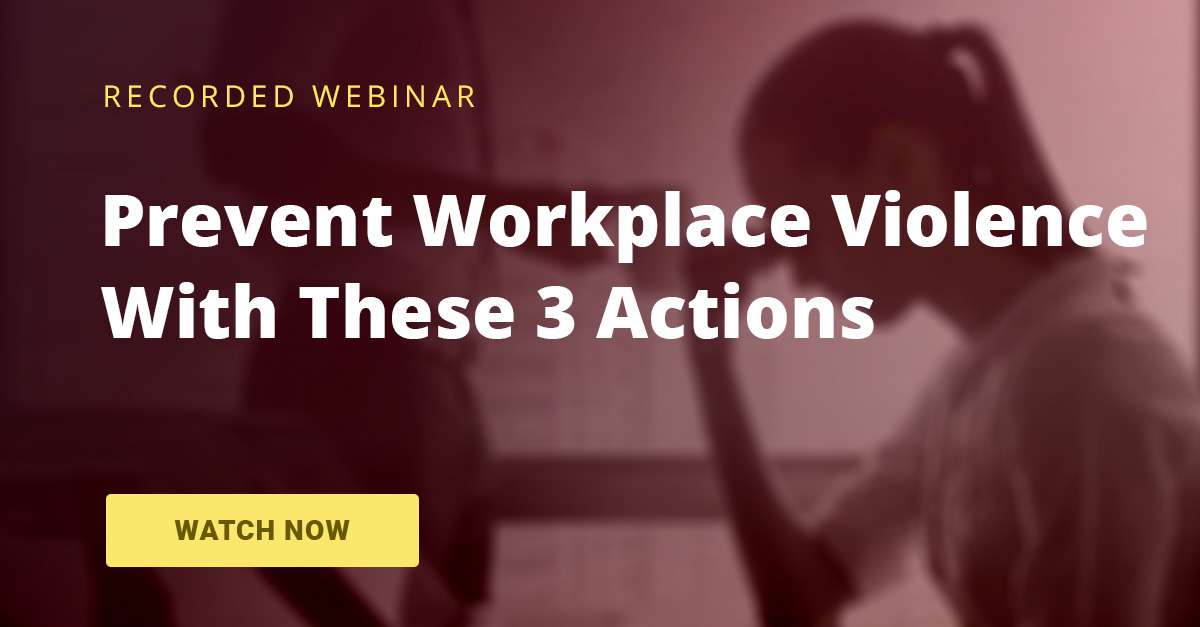Reporting Workplace Violence: Why It’s Critical To Stopping Issues
From high-profile mass shootings to serious injuries, workplace violence in the United States is on the rise.
In 2014, 409 people were fatally injured in work-related attacks, according to the U.S. Bureau of Labor Statistics. Despite efforts to curtail the violence, the National Safety Council’s data indicated a 1% increase in 2016 – more than one person murdered per calendar day while at work. It is clear that strengthening an organization’s reporting strategies is the first step to preventing workplace violence.
Early Incident Reporting Strategies
Effective reporting strategies begin with the tone set at the executive level. Management should acknowledge that a physical threat can come from outside or inside the organization, but can mitigate the risk of any attack by empowering employees to report actual incidents and signs of violence as early as possible.
Depending on your organization, the reporting strategy may mean alerting a supervisor or the human resources department. Or, as workplace interactions expert David Smith said in a recent AlertFind webinar, companies may create threat management teams. These teams are the hub for reporting workplace violence, serve as internal investigators, and take action to avoid these incidents from escalating.
The Three Stages of Workplace Violence
Workplace violence escalates through three stages:
Stage 1: Early indicators are marked by abusive language. The offender is someone who is outwardly confrontational and degrading and may even begin to spread rumors about someone or the company, in general.
Stage 2: Outbursts have evolved from verbal to written attacks, expressed in emails, texts or social media posts.
Stage 3: At this point, the threats have become violent acts.
And while rehearsing how to respond during a physical confrontation is a key component of proactive training, taking preventative measures from the outset is the most effective deterrent of violence. This includes establishing an employee reporting structure, via the threat management team, for when workers notice behaviors described in the three stages of violence.
“On every single instance that is reported, an action needs to be taken and not just swept under the rug,” Smith said.
Smith added that reporting issues that are identified in stage 1 is critical in preventing workplace violence.
“Becoming violent is a process and that involves change over time,” he said. “By allowing individuals or organizations to understand what that change looks like over time, they can intervene at earlier stages before hands are put on anyone.”
Alternatives to Anonymous Reporting
While some organizations may want to implement anonymous threat reporting, it’s not always recommended. While employees might feel more comfortable reporting issues anonymously, Smith noted that anonymity should not be promised, as “Once a person poses a risk, it immediately becomes a matter that other people should know about.”
He added that, “It’s better to stay away from an anonymous tip line. There are organizations that use them but those programs are not as effective. The goal is for employees to feel comfortable contacting someone to report the issue,” which is where the importance of the threat management team becomes evident.
Establishing a well-trained team is critical and Smith advocates for having a core person and a secondary person to take reports. “This tightens up communication within an organization,” he said. “Then there’s always somebody on-site who can address the issue.”
By encouraging early reporting strategies and fostering a culture where employees feel safe and empowered to speak up, you can reduce the risk of your workplace being the site of another violent act.
To learn more from workplace interactions expert Dave Smith about proactively identifying and addressing issues, watch our new webinar, “Preventing Workplace Violence: 3 Actions To Take Now.”

You are well on your way toward protecting your staff and organization.
Take the next step toward protecting your organization by learning more about emergency notification systems and the vital role they play in your emergency preparedness plan.
